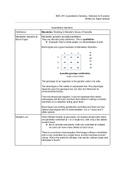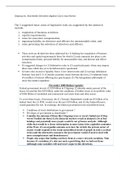Class notes
BDE 244: Quantitative Genetics, Selection & Evolution
- Course
- Institution
A 41 page collection of all information covered in the lectures of BDE 244 Quantitative Genetics, Selection & Evolution. These notes contains the given work from the lectures as well as extra definitions, explanations and diagrams from online resources. Tables and bullet points are used to aid memo...
[Show more]












